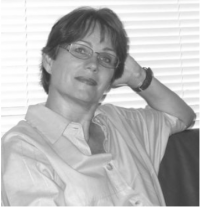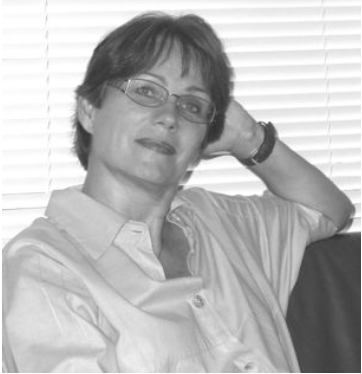By Verena Risse
The specific challenges of living life as a woman and 4 tools that help turning them into opportunities.
Transition? By this, I mean a state of change in people’s life. It can be self‑induced or come as an external input. Transition is a period when people leave their comfort zones. They leave the areas of their life where they feel knowledgeable and experienced and are able to manage day‑to‑day tasks without extraordinary efforts. They don’t necessarily feel happy within their comfort zone but they feel quite safe. Transition challenges our safety. We step into unknown territory and experience anxiety. And exactly here, in this new and not‑so‑comfortable space, we grow and learn! If we manage to give phases of transition a meaningful purpose for our life, transitions become priceless boosters of fulfillment and transformation. Transitions may be triggered by a new job, a pregnancy, by getting married or by loosing a loved‑one, by moving to a different environment, by becoming a mother, etc.
Why women? The prevailing role of women in industrialized societies requires many transitions men typically do not need to make. The mere ability to give birth as well as actual motherhood is –in my humble opinion‑ the decisive reason for a series of “women‑only” transitions. Typically, these life transitions and the implicit decision‑makings are compromises between a professional career and being a mother and wife. Women – from adolescence to post‑meno pause – face the challenge of walking a fine line between their role as supporting wife and mother on the one hand and the successful professional on the other. Does any of this sound familiar to YOU? If yes, we are in a dialogue. If no, still continue reading. Who knows what’s in for you.
We see 4 stereotypes of today’s adult women:
1. The professional woman with kids and husband.
2. The single women with kids and a job.
3. The single career woman.
4. The full‑time mum and wife being the backbone of her family.
Sounds like women have choices! Well, a closer look reveals the flip sides of each type‑ also known as “Women, know your limits!”:
1. Type 1: Typically overstrained and stressed‑out but with the comfort of financial safety.
2. Type 2: Typically stressed‑out and ignored by society and with financial issues.
3. Type 3: Typically panicking at the age of 40 but financially safe.
4. Type 4: Typically lacking acknowledgment (except for mother’s day) and hopefully financially ok.
Listening to women’s narratives even reveals that many never made a conscious decision but somehow find themselves in one of these categories. Quite often, they feel deprived of the life they once dreamed of. More often than not, their dreams shrivel to unrecognizable memories in the face of daily choirs. For women in the middle of motherhood and/or job, re‑defining their life presents a tough challenge. And women entering retirement after years of attending to children, job and husband first, often find themselves clueless what to do with their life once the children have left the nest and things become quieter.
Social reality and subconscious compliance to social expectations make women transit from one life period to the next without actually feeling that they have a true choice.
Can we change this? Absolutely! We can. We can deliberately decide how exactly we want to spend our next life sequence. We can develop a master plan according to what we truly want for our life. And then, we can steer the ship even through rough sea without getting off our course. Life transitions become periods of readjusting the steering wheel. Transitions become opportunities to course‑correct and learn. How can we do this? I’ll come to it in a moment. Before, please bear with me for an important key element of our success:
Women do 80% of the work in the world. They certainly deserve much more support from husbands and from society. But if society (or husbands) turns a blind eye, helping ourselves is our first and only option to change things for the better. It is ‘acting versus re‑acting. And since women are natural team players, reaching out to ‘sisters in arms’ and to professionals, e.g. coaches, is worth a try. Don’t you agree?
Each sequence in life and OUR decision on how to configure it has far reaching effects. Each transition requires us to adapt and offers the chance to grow and to find purpose in what we do. And each transition begins with a question: Who am I?
Surprising? Well, think about it: If I do not know who I am, I don’t know what I need in order to lead a meaningful life – meaningful in the sense of personally getting value and satisfaction from what I do. If you are a nature person, deeply connected to and inspired by nature, living in a crowded metropolitan environment will make you unhappy and even sick. If you are rooted in cosmopolitan live style, you will suffer making a living from self‑made goat’s cheese in the French Alps. We need to know who we are before we are able to make sustainable choices for our life. Not easy to answer, though. However, if we don’t take the time exploring and finding the answer, we may pay a high price. Before we even notice, we find ourselves on a path that simply is not ours.
Ladies, here are 4 tools that help you to become clear about WHO YOU ARE and how you want to spend your life:
Once you have completed these exercises, YOU will be able to consciously enter into your next transition. You will be able to make the best of a transition that is externally applied on your life. You will be able to trigger a transition when you feel it is time for a change.
The exercises need undisturbed time. Plan for a couple of hours. One advise from my side: Don’t start debating with yourself. Follow your gut feelings and your intuition. Let’s start!
1. Sit down with a huge white piece paper and start a mind‑map around the nucleus “I am…”. If you are not familiar with mind mapping, simply write it down. Include colours (they stimulate our brain), draw pictures (they stimulate your brain), and allow thoughts and ideas to surface even if they seem to be weird. Give permission to your “self” to think and feel anything that pops up. Listen to your best self. Ignore your inner critic. If the critical voice is too loud, stop! Go and ask friends and family what they see in you. Metaphors often come to mind. Note them down and explore what they mean for you. Take your time.
Use the following visualization and questions to approach the topic.
2. Remember a situation in your life when you were 100% happy and fulfilled. A situation when the world was yours! You felt strong, almost invincible. Everything was just right, the environment, the weather, the light around you, the sounds, the energy of the place, all just perfect. Try to relive this peak moment of your life.
What is this situation about? Who is with you? Where are you? What is the colour of the air? What is important? What is your achievement? Who are you?
Note down your memories and mark the elements that contributed most to your peak experience. It is quite likely that these elements are still of great value to you. Which ones are still present in your today’s life? And which ones are being subdued by your present life? Are you still the person you were during your peak experience? What is different? Do you feel there’s need for re‑balancing?
3. Discover what other values are truly important to you. Write a list of things you deeply hate. Then define their opposites, e.g. I hate when people try to get a ‘free ride’ disguising it as something else. I value ‘give and take’ and integrity. Try with passion. Avoid any copy‑paste. Defining values easily can become jotting down all socially respected values that come to mind. But these are not necessarily YOUR values. Check carefully.
At this point of the exercises you have discovered and defined values that are non‑negotiable for you. You’ve also gained a fairly good idea of who you are and of who you want to be for your next decade(s). The values and the vision for yourself build the core of your personality. Next, condensate them into a life purpose statement.
4. Once you assembled the value list and your core personality, you want to apply it to the context of your life. For this, we need to answer a second question: What is my purpose in life? It is your personal mission & vision. Answer the question “Who do I want to be in order to do what I want to do?”. Draft a statement that consists of 2 elements: First, the element “I am…” and second, the element “I (will) do…. By connecting the 2 elements of “be” and “do”, you link your authentic personality to what you want/value in life. The result is a compelling guideline for your life path. Here are some examples:
- “I am a facilitator by writing books that make kids dream big dreams”.
- “I am a harbor providing shelter for abused women.”
“I am a rocket that propels start‑ups by coaching them into their best‑case business scenarios.”
As you notice, all examples are connecting the “I am” part to a specific action. Beware of thinking small here! You want to create a purpose that is meaningful! Take your time and check: What is truly true for me? Not one life purpose resembles another! They are as individual as we are.
It is never too late for a meaningful transition. Like any other complex project, it needs strategy, planning and careful execution. My appeal to you is simple: For your next transition, start with the strategy first: Take your time to focus on your life purpose and your values. This will be the beginning of YOUR transition towards a fulfilled and meaningful future that will make you happy.
Dear fellow women, we are the decisive element in our lives. Let’s stop self‑limiting.
Warmly,
Verena Risse
www.vericoaching.com
verena.risse@vericoaching.com
P.S. Here’s a bit of my own story: 18 years of investments banking, fully‑fledged, career driven, successful. 2 kids, 1 husband. Overworked, stressed‑out. The subprime banking crisis merges nicely with my own and triggers a phase of revulsion. This is when I first hire a coach. Today (4 years later), I provide horse‑assisted leadership workshops in Indonesia and work as a leadership and life coach. It makes me smile every day.

